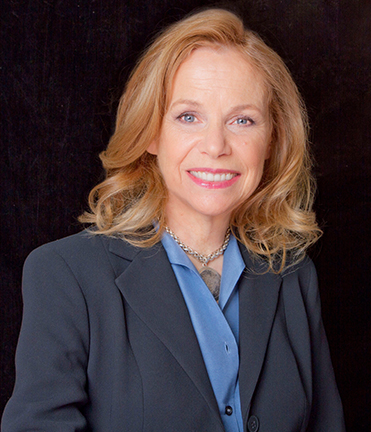Breastfeeding: It’s Not Just Babies Who Benefit
BREASTFEEDING BENEFITS FOR MOTHERS MAY EXCEED THE BENEFITS FOR THEIR BABIES
Doctors have long understood the benefits of breastfeeding for infants. Today, more and more people are recognizing the immense benefits of breastfeeding for mothers. To start with, breastfeeding significantly reduces a mother’s risks for both breast cancer and ovarian cancer. Lactogenesis suppresses estrogen and ovulation, an important factor in the growth of these cancers. A mother’s risk of breast cancer is reduced by 4% for every year she breastfeeds. Mothers who have ever breastfed reduce their risk of ovarian cancer by 25%. The beauty is that breastfeeding is something women can do to change their future risk of cancer. As opposed to mammograms, which allow early identification of cancer, breastfeeding offers women the option of actual prevention.
Mothers who breastfeed for as little as one month also reduce their risks of high blood pressure, diabetes, high cholesterol, and heart disease. These reductions in disease risk hold true regardless of the woman’s race, income, education, and other socioeconomic factors.
THINK OF PREGNANCY AS AN 18-MONTH EXPERIENCE
Milk requires a woman’s energy resources to produce it. As mammals, our bodies get ready to produce milk as soon as a baby starts to grow. Pregnancy, it turns out, is not just a 9-month experience, it’s more like an 18-month effort. The ingredients for milk-making are meant to be consumed by the infant. If a mother’s body has prepared to lactate and doesn’t, these ingredients stick on the mother as belly fat. This visceral fat puts the mother at risk for diabetes, heart disease, and a host of other health problems. Mothers who never lactated typically end up with belly fat close to the size of a stick of butter.
In contrast, mothers who breastfed have, on average, a 6-centimeter smaller waist circumference, and if they do accumulate fat, it’s less likely to end up as visceral fat. Mothers who breastfed are more likely to end up “pear shaped,” where fat accumulates below their waistlines, as opposed to the more dangerous “apple shaped,” with belly fat that is linked to diabetes and heart disease.
BREASTFEEDING INCREASES IQs OF CHILDREN
We know from MRI comparisons that the brains of children fed with human milk develop differently from children fed with cow’s milk. Children’s brain development requires special fats that are not found in cow’s milk. The long-term consequences of a lack of these fats for babies fed nonhuman milk include an average loss of seven points in IQ. This difference has been known for years, but many in the U.S. have assumed that this difference came about because mothers who were rich and well-educated were more likely to breastfeed. However, a recent Brazilian study that followed children to 30 years of age counters these thoughts. In Brazil, rich and educated women were not more likely to breastfeed; even so, breastfed babies had higher IQ, more educational achievement, and higher incomes at 30 years of age.
THE COSTS TO SOCIETY OF NOT BREASTFEEDING ARE ENORMOUS
The health data are staggeringly clear; when breastfeeding is interrupted, both mothers and babies suffer, and our communities are unnecessarily burdened with costly health problems. The tragedy is that despite this, only 8% of our nation’s hospitals are following evidence-based practices in supporting breastfeeding, allowing their recognition as a “baby-friendly” hospital. We need a national conversation about making it easier for mothers to breastfeed, including paid maternity leave, on-site day care, and access to evidence-based maternity care for all.
Search Articles
Latest Articles
Mental Health Empowerment with Mitzi Perdue | Discover Your Potential
Mental Health Empowerment with Mitzi Perdue | Discover Your PotentialWatch The Episode About The Episode Join us on this insightful episode of Discover Your Potential (sponsored by Betterhelp) as we sit down with Mitzi Perdue, philanthropist, author, and passionate...
Money Does Stink: Michael Podolsky’s Fight Against Corporate Complicity in Russia
https://foreignpress.org/journalism-resources/money-does-stink-michael-podolsky-fight-against-corporate-complicity-in-russia Publication –foreignpress.org
Gina Gardiner & Friends: Mitzi Perdue
Gina Gardiner & Friends: Mitzi Perdue About The Episode Welcome to the 'Gina Gardiner & Friends Show' - this episode features my guest, Mitzi Perdue whose theme was 'A New Perspective On The War In Ukraine'. About The Show The Gina Gardiner & Friends Show is...
Wisdom from Mitzi Perdue, Daughter of the Sheraton Founder
Wisdom from Mitzi Perdue, Daughter of the Sheraton FounderAbout The Episode In this episode of the Think Millions Podcast, we delve into the extraordinary life of Mitzi Perdue, who has been surrounded by greatness her entire life. As the daughter of Sheraton Hotels...
Subscribe to Updates
About Author

Mitzi Perdue is the widow of the poultry magnate, Frank Perdue. She’s the author of How To Make Your Family Business Last and 52 Tips to Combat Human Trafficking. Contact her at www.MitziPerdue.com
All Articles
The Company That Banned Birthday Cakes
The Company That Banned Birthday CakesWant to hear something shocking? Barnone, the call center located in Winterplace Park has just banned birthday cakes. Are they hard-hearted Scrooge-type people who just don’t want anyone to have any fun? Actually, the answer is...
Cleaning Up After Oil Spills
Cleaning Up After Oil SpillsDo Water and Oil Mix? Assume for a moment that you’re a betting kind of person. Would you accept a bet that oil and water don’t mix? You wouldn’t accept the bet if you visited the National Oil Spill Response Test Facility in Leonardo, New...
Fungi: The Forest’s Digestive System
Fungi: The Forest’s Digestive SystemFungi are a Forest’s Digestive System “It’s beautiful, isn’t it?” The man asking this question is Lance Biechele, a man who’s been studying mushrooms for 35 years. He’s looking at a dead maple tree, and to the untrained eye, this...
Fisheries Need a Timeout – Unfortunately
Fisheries Need a Timeout – UnfortunatelyThe fishing industry is a paradox. Worldwide, the industry faces a crisis. Dozens of fisheries are no longer commercially viable because we’re harvesting fish faster than they’re being replaced. According to fisheries expert...
What Really Happened to the Dinosaurs?
What Really Happened to the Dinosaurs?Pop quiz time! When did the dinosaurs go extinct? A. 65 million years ago B. 5 million years ago C. They didn’t go extinct and if you walk outside today, you may see one. Up until a few years ago, most people would say the first...
The World’s Reference Library for Minerals
The World’s Reference Library for MineralsWhat is the most widely viewed museum object in the world? The answer is, the Smithsonian’s Hope Diamond. If you’re one of the roughly 30 million people who will be visiting the Smithsonian Institution in Washington, D.C....

